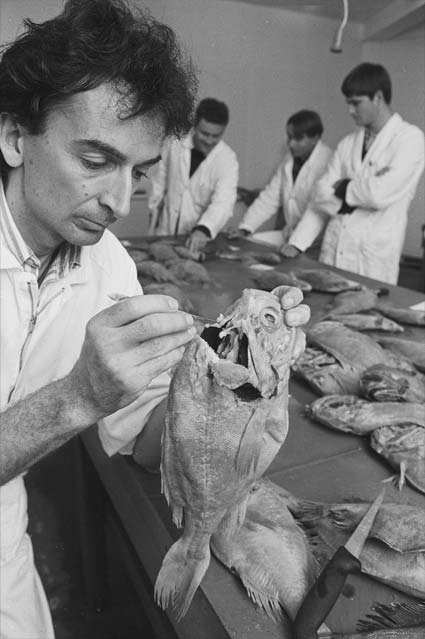
The number of growth rings on the otolith or ear bone can provide an estimate of a fish’s age. These rings show periods of high and low growth rates which may be seasonal, but not necessarily annual. It is important to know the age of fish that are used commercially; long-lived fish are vulnerable to overfishing because their growth and reproduction rates are lower. Here, scientist David Banks removes an ear bone from an orange roughy. This species was fished faster than it could replace itself on the Chatham Rise during the 1980s. Later it was realised that orange roughy live for up to 150 years, and have a low rate of reproduction.
Te whakamahi i tēnei tūemi
Alexander Turnbull Library, Dominion Post Collection (PAColl-7327)
Reference:
EP/1991/1494/7
Photograph by John Nicholson
Permission of the Alexander Turnbull Library, National Library of New Zealand, Te Puna Mātauranga o Aotearoa, must be obtained before any re-use of this image.





Tāpiritia te tākupu hou